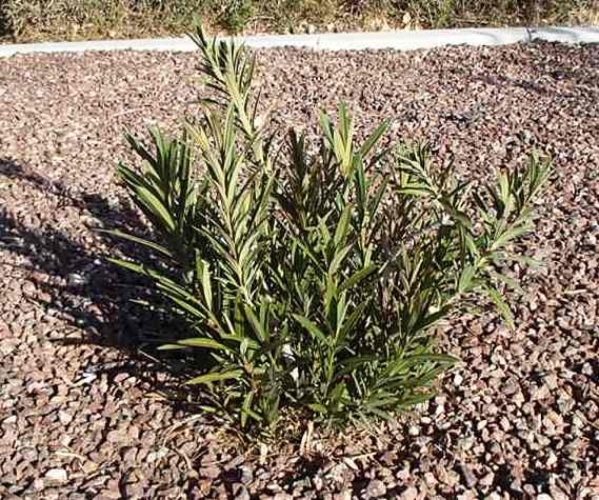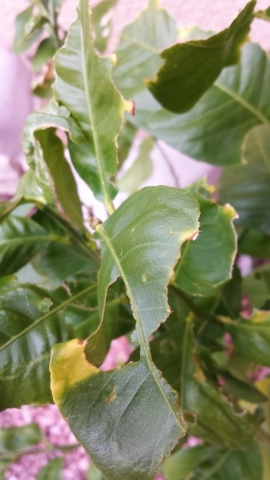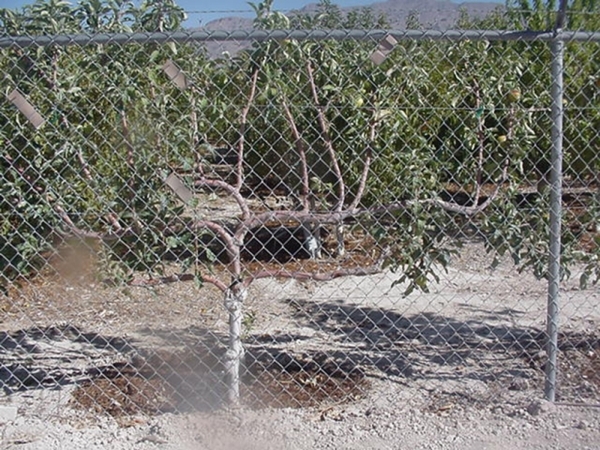Older oleanders can handle heavy pruning
Q: You had an article a while back about trimming oleander down before spring. I have five in my backyard and have never done that. I am afraid to trim them down. Let me know because I am ready to fertilize.
A: If oleanders are getting old and unsightly, you have two choices if you want to improve their looks. The first is you can cut them down to the ground, leaving stubs about 3 to 4 inches above the soil, and they will sucker and regrow from these stubs or the base.
This type of pruning eliminates flowers early in the season, but it will start flowering probably around July when growth is older. You can cut them back now. They grow back very quickly when it's warm and they have plenty of water.
The second option cuts back a few of the oldest and largest stems in the same way but leaves the smaller ones unpruned or cut back with some of the foliage remaining. Pruning the second way doesn't leave an open space, and the remaining smaller stems will flower much earlier.
Pruning them with a hedge shears, which is traditional around here, in the spring and summer removes the future flowers, and you're faced with a only green plant until it regrows and flowers.
Fertilize them and water them after they are pruned. This is important if you want them to grow back quickly.
Q: I have a peach tree that has been in the ground one year. I was supposed to spray it with dormant oil spray before leafing out. Is copper fungicide OK for spraying in the spring? I want to avoid bad pesticides because of birds, good bugs, etc.
A: There is confusion out there concerning dormant sprays and dormant oils. Dormant sprays can be a number of different types of sprays. The term dormant spray is a trade name and tells me nothing about its contents.
If I have the trade name and the manufacturer, then I can find the label, and I will know exactly what it contains. There is no hard-and-fast rule when talking about dormant sprays.
Dormant sprays are usually a traditional pesticide or combination of traditional pesticides sprayed during the winter or early spring. Sometimes they contain a fungicide that has copper in it, and sometimes they contain an insecticide as well. They are typically not organic.
Dormant oils, on the other hand, are very specific. They vary a little bit among manufacturers but not as much as dormant sprays. Dormant oils are used in organic production.
There is no reason for spraying a copper fungicide contained in the dormant spray if there are no plant problems to solve. However, dormant oils are very important to apply as a preventive measure for controlling some of the insects common on fruit trees.
Be sure you have a specific reason for applying dormant sprays before you do it. On a 1-year-old peach tree, I doubt there is a good reason unless you have diseases such as Coryneum blight, also called shothole fungus. If we have extended periods of wet weather or rain, consider applying it after the rain has finished. But otherwise I would not do it.
Q: I have a very small backyard and a 20 foot by 18 inch planter against the back wall of our property that is now empty. We were thinking of planting espalier fruit trees in this space. My wife wants a Myers lemon, and I like a peach or nectarine, pear, or even an apple.
A: You can fit about three fruit trees on a 20-foot trellis. The trees must be espaliered. They don't have to be dwarf except for the apple.
The easiest trees to trellis are those that produce fruit on spurs — most apples, pear, apricot, plum and pluot. Citrus will work if the location is in a warm microclimate during the winter and protected from the wind.
Nectarine can be difficult because it frequently requires a lot of spraying to prevent Western flower thrips and the scarring this insect causes to nectarine fruit.
Peach is more difficult to prune in espalier because it does not produce fruit in spurs. Purchase these trees at any local nursery or garden center, but reference my list for the best varieties. You will find it on my blog, or email me, and I will send you a copy.
Buy a small tree if you are going to trellis. The wires for trellising should not be against the wall but away from it at least a few inches so you can prune behind it.
Trellis wires start at a height of about 18 inches from the ground and are horizontally spaced 18 inches apart. Everything growing toward the wall is pruned off.
In the first year, cut the top of the tree about 2 inches above the bottom wire. The growth closest to the cut is directed to the next wire above it and tied. Two side branches are tied tightly to the bottom wire.
Next year, repeat this process at the second wire, then the third wire and finally the last wire. Once the tree occupies the entire trellis, any long branches growing above the top wire are removed. Branches growing away from the wall are cut back to 3 or 4 inches.
Q: I have a 1-acre lot in east Las Vegas with large pine trees. One of the trees recently started dripping lots and lots of sap. Upon inspection, we found some horizontal lines of holes in the bark. I looked online, and it suggests a bird rather than a borer if the holes are in lines. Are there woodpeckers in Las Vegas?
A: Yes, we have the yellow-bellied sapsucker here, which is in the family of woodpeckers. They cause the kind of damage you are seeing and drill holes in horizontal lines, which can drip sap. It looks a little bit like someone took a drill and drilled holes in the tree close together and in a straight line.
There is not much you can do except exclude these birds from the trunk, which is difficult to do. The good news is that these trees can live many years with this type of damage from these bird if the tree is healthy and growing.
Big pine trees use a lot of water, so make sure yours is receiving enough water in the spring and summer months so that it grows enough to recover from this kind of damage.
If damaged trees do not grow enough to recover from this damage, then it will be a problem for the tree over time.
Q: I have a lemon tree with the leaves eaten up by something. I have been spraying with soap and water weekly, but I've not seen any improvement. Any ideas?
A: I looked at the picture you sent of the leaves. Damage caused by critters is frequently visually characteristic of the feeder. In your case, the leaves are chewed from the tips, and entire portions of the leaf are gone.
Commonly, we see root weevil damage on citrus, but this does not look like root weevil damage. Root weevil damage characteristically leaves a "notching" along the edge of the leaf, which I don't see here.
Rabbits can damage citrus, but they usually eat the small twigs or branches and entire leaves. This damage usually extends only as high as they can reach. For cottontails, it is about a foot. For jackrabbits, it can be 2 1/2 feet or more.
Rabbits also damage the trunks if trees are fairly young. It does not look like rabbit damage, but I would not rule them out, particularly during the winter. Look at where the damage is located on the tree, and see if it extends only to a certain height, which might point to rabbits.
The damage to your tree resembles grasshopper damage, but I would not expect damage from grasshoppers this time of year because they are not active now. Perhaps this damage happened a while back, and you are just now seeing it?
Soap and water sprays will not leave behind a toxic residue that kills pests like grasshoppers. Soap and water sprays only kill insects that you spray directly.
Traditional pesticides like Sevin insecticide leaves behind a toxic residue. Try spraying with Sevin if the lemon tree is not in flower.
— Bob Morris is a horticulture expert living in Las Vegas and professor emeritus for the University of Nevada. Visit his blog at xtremehorticulture.blogspot.com. Send questions to Extremehort@aol.com.


























